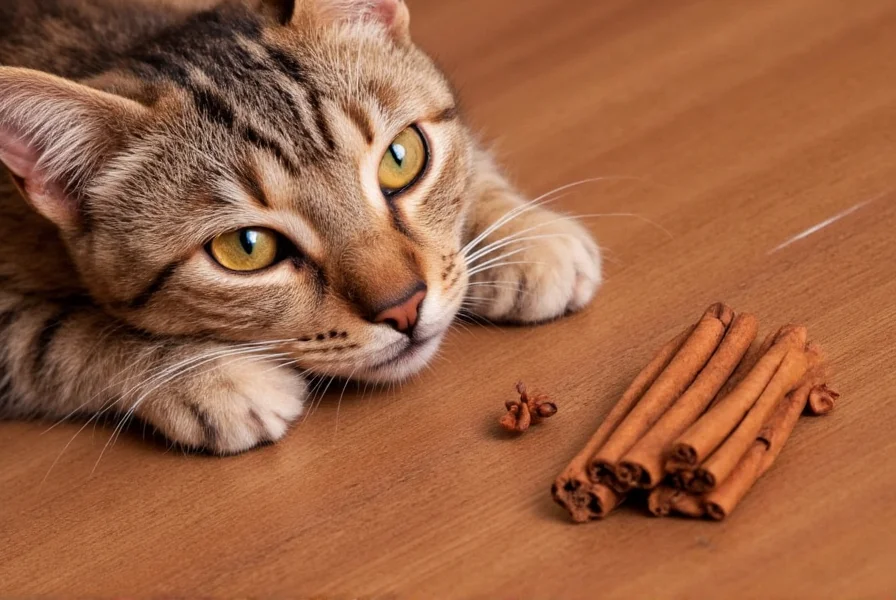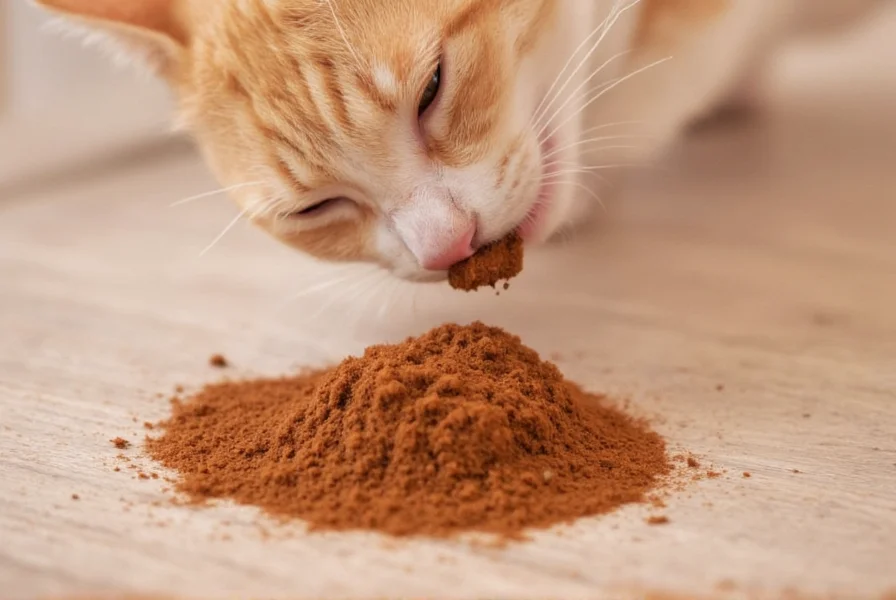Cat owners often wonder about common household items that might pose risks to their curious pets. Cinnamon, a popular spice found in many kitchens, raises legitimate safety concerns when it comes to feline health. Understanding the specific dangers and appropriate responses can help prevent unnecessary veterinary emergencies.
Why Cinnamon Poses Risks to Cats
Cats lack certain liver enzymes that humans and dogs possess, making them particularly vulnerable to compounds found in cinnamon. The primary concern comes from cinnamaldehyde and coumarin, chemical components that give cinnamon its distinctive flavor and aroma but can cause significant health issues in cats.
Different Forms, Different Risks
Not all cinnamon exposures carry equal danger. The risk level varies significantly depending on the form of cinnamon and the exposure method:
| Cinnamon Form | Risk Level | Primary Concerns | Safe Exposure Threshold |
|---|---|---|---|
| Essential Oil | Extreme | Respiratory distress, chemical burns, liver failure | Any amount requires immediate veterinary attention |
| Ground Powder | Moderate to High | Nasal/skin irritation, digestive upset, aspiration risk | More than 1/4 teaspoon may cause symptoms |
| Whole Sticks | Low to Moderate | Choking hazard, mild digestive upset | Occasional small exposure typically not dangerous |
| Cinnamon in Food | Low | Generally safe in commercially prepared cat foods | Formulated amounts in pet products are typically safe |
Symptoms of Cinnamon Exposure in Cats
Recognizing the signs of cinnamon toxicity early can make a critical difference in your cat's recovery. Symptoms may appear within minutes to hours after exposure and can include:
- Excessive drooling or pawing at the mouth
- Vomiting and diarrhea
- Difficulty breathing or wheezing
- Lethargy and weakness
- Low heart rate and blood pressure
- Redness or irritation on skin or paws
- In severe cases: liver damage or neurological symptoms

Essential Oil Dangers: A Special Warning
Cinnamon essential oil represents the most significant danger to cats. Many pet owners unknowingly put their cats at risk by using essential oil diffusers containing cinnamon. Cats' respiratory systems are extremely sensitive to these concentrated oils, which can cause:
- Chemical pneumonia from inhalation
- Severe irritation to mucous membranes
- Life-threatening respiratory distress
- Potential liver damage from dermal absorption
Veterinarians consistently report increased emergency visits during seasons when people use cinnamon-scented candles and diffusers. The American Society for the Prevention of Cruelty to Animals (ASPCA) lists cinnamon oil as potentially toxic to cats.
What to Do If Your Cat Is Exposed to Cinnamon
If you suspect your cat has been exposed to cinnamon, follow these steps:
- Immediately remove any remaining cinnamon from your cat's reach
- Gently wipe away visible powder with a damp cloth (avoid getting in eyes)
- Do not induce vomiting unless directed by a veterinarian
- Contact your vet or an animal poison control center immediately
- Have the cinnamon product packaging available for reference
For essential oil exposures, ventilate the area immediately and remove your cat from the environment. Never apply water or other substances to skin exposed to essential oils, as this can increase absorption.
Preventing Cinnamon Exposure
Prevention is always better than treatment when it comes to potential toxins. Consider these safety measures:
- Store cinnamon and other spices in secure, cat-proof containers
- Avoid using cinnamon-scented candles or diffusers in homes with cats
- Be cautious with homemade cleaning products containing cinnamon
- Supervise baking activities where cinnamon is used
- Check ingredient labels on pet products for cinnamon content
When to Seek Veterinary Care
While minor exposures to small amounts of cinnamon powder may resolve without intervention, certain situations require immediate veterinary attention:
- Any exposure to cinnamon essential oil
- Difficulty breathing or wheezing
- Continuous vomiting or diarrhea
- Lethargy lasting more than a few hours
- Known ingestion of more than 1/4 teaspoon of powder
Early intervention significantly improves outcomes for cats with potential cinnamon toxicity. Your veterinarian may recommend supportive care, activated charcoal, or other treatments depending on the severity of exposure.
Safe Alternatives for Cat Owners
If you're looking for pet-safe alternatives to cinnamon for various purposes:
- For baking: Consider cat-safe catnip or valerian root for homemade cat treats
- For air freshening: Use pet-safe alternatives like diluted lavender (in moderation) or simply open windows
- For cleaning: Opt for vinegar-based solutions instead of essential oil cleaners
- For pet products: Choose items specifically formulated for cats without essential oils
Understanding Feline Metabolism and Toxin Processing
The reason cats are particularly vulnerable to cinnamon relates to their unique physiology. Unlike humans, cats lack the glucuronyl transferase enzyme needed to properly metabolize certain compounds found in cinnamon. This deficiency means potentially toxic substances remain in their system longer, increasing the risk of damage to organs like the liver.
Research published in the Journal of Feline Medicine and Surgery indicates that cats' livers process compounds differently than other mammals, making them more susceptible to certain plant-based toxins. This metabolic difference explains why substances safe for humans can be dangerous for cats.











 浙公网安备
33010002000092号
浙公网安备
33010002000092号 浙B2-20120091-4
浙B2-20120091-4